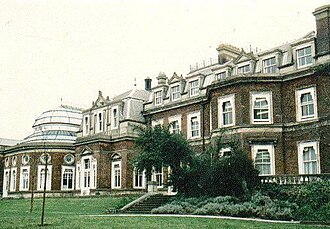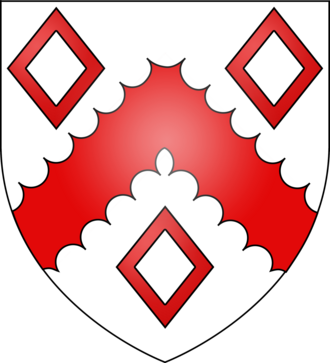Discover Your Roots
SIGN UPDiscover Your Roots
SIGN UPThe name Spring is of English origin and is primarily gender-neutral. Its meaning encompasses both "Jump Suddenly" and "Season," reflecting the lively and vibrant characteristics associated with the spring season. As a feminine given name, Spring is derived from the English word for the season, symbolizing renewal and growth. Historically, it was moderately popular, particularly in the late 20th century, but has since declined in usage. In 2021, forty-two newborn American girls were given the name, with seventeen receiving it in 2022. This name is associated with the season after winter, characterized by warmer weather and blooming flowers. It is also a verb denoting sudden movement and a noun referring to a coiled object used in mechanics. The name Spring carries a sense of freshness and energy, making it a unique and evocative choice for parents seeking a name with natural and dynamic connotations.

Spring Byington (October 17, 1886 – September 7, 1971) was a renowned American actress whose career spanned radio, television, and film. She gained fame as the lead in the radio and television series "December Bride," and was also a contract player for MGM, appearing in numerous films from the 1930s to the 1960s. Byington's exceptional talent earned her an Academy Award nomination for Best Supporting Actress for her role as Penelope Sycamore in "You Can't Take It with You" (1938).Born in Colorado Springs, Byington's early life was marked by tragedy, but she persevered to pursue her passion for acting. She began her career with the Elitch Garden Stock Company and later made her mark on Broadway, starring in productions such as "Beggar on Horseback" and "Once in a Lifetime." Byington transitioned to films, making her debut in "Papa's Slay Ride" (1930) and achieving widespread recognition for her role as Marmee in "Little Women" (1933) alongside Katharine Hepburn.During World War II, Byington ventured into radio and later found success on television, notably with her role as Lily Ruskin in the popular sitcom "December Bride," which aired from 1954 to 1959. Her talent and versatility allowed her to continue captivating audiences through various mediums, making her a beloved figure in the entertainment industry.

Spring Valley, Minnesota, is a town with a rich history and a population of 2,479 residents as of the 2010 census. The city, laid out in 1855, was named for a spring near the town site and incorporated in 1872. Spring Valley covers an area of 2.53 square miles with U.S. Route 63 and Minnesota State Highway 16 serving as its main routes. The city's demographic makeup in the 2010 census showed a population that was 97.6% White, with a variety of other racial backgrounds represented. Notable people from Spring Valley include Richard Sears, the founder of Sears, Roebuck and Company, and Almanzo Wilder, husband of Laura Ingalls Wilder, who lived on a farm near Spring Valley. The median income for a household in the city was $32,688, and the median income for a family was $42,468. Spring Valley's history and notable residents contribute to its unique character and appeal.

The Spring family, a prominent Suffolk gentry family, has been influential in the politics and economy of East Anglia since the 15th century. They also held extensive estates in Ireland from the 16th century. The family's history dates back to 1311, with Sir Henry Spring being the lord of the manor at Houghton-le-Spring. The Springs gained prominence as important merchants in the cloth and wool trade in Lavenham, Suffolk, during the 15th and 16th centuries, becoming one of the wealthiest families in England at the height of the wool trade. Through advantageous marriages and public offices, they established themselves as gentry in Suffolk, representing the county in the House of Commons and holding the role of High Sheriff of Suffolk. Despite their relation to the Yorkist George Plantagenet, the Springs were supporters of the House of Lancaster during the Wars of the Roses. The family has produced notable figures in various fields, including politics, the military, and aviation. In Ireland, the Spring family settled in County Kerry and Munster, securing a strong financial position and forming alliances with Old English Munster dynasties. The family's influence in Ireland led to the establishment of the Spring Rice family, which was later raised to the peerage as Barons Monteagle of Brandon. The Spring Rices owned extensive land in Ireland and played a significant role in Irish politics. The family's legacy is commemorated through monuments in various locations, including the church of

Spring Grove, located in the Borough of Hounslow, London, is a district known for its historical significance and architectural charm. Centred around Spring Grove House, the former residence of renowned botanist and explorer Sir Joseph Banks, the area boasts a rich heritage dating back to the eighteenth century, when spring water was utilized for agricultural and horticultural purposes. The vision for Spring Grove in the 1850s-1860s was that of a grand Victorian suburb, characterized by elegant Italian-style villas and striking architectural features. Over the years, the district has evolved, welcoming residential development and educational institutions such as Brunel University London and West Thames College. From Georgian residences to substantial Victorian property development and modern constructions, Spring Grove has witnessed a transformation while retaining its appeal to middle-class communities. Additionally, the area is home to notable landmarks including Isleworth Crown Court, housed in a building with a rich history. With its blend of historical significance and contemporary developments, Spring Grove continues to be a captivating part of London's landscape.

The Spring Baronetcy of Pakenham in the County of Suffolk is a distinguished title in the Baronetage of England, with a rich and storied history dating back to 1641. Sir William Spring was the first to hold the title, having been knighted by Charles I. The Spring family played significant roles in English politics, with members serving in Parliament and supporting various causes during the English Civil War and The Protectorate period. After the fourth baronet's passing in 1737, the title and estates were separated, leading to complexities in the succession. The baronetcy was initially believed to have become extinct in 1740, but it was later inherited by the fifth baronet's son. Sadly, the title eventually became dormant following the death of the sixth baronet in 1769. The family motto, "Non mihi sed Patriae" (Not for myself but for my country), reflects their commitment to serving the nation. The Spring baronets were associated with Pakenham Hall in Suffolk until 1737. This influential family's legacy is tied to their enduring dedication to public service and their significant contributions to English history.
All images displayed on this page are sourced from Wikipedia or Wikimedia Commons.We use these images under their respective Creative Commons or public domain licenses. Wherever applicable, author attributions and license information are provided. If you believe an image is used incorrectly or outside its license terms, please contact us so that we can review and correct the issue.